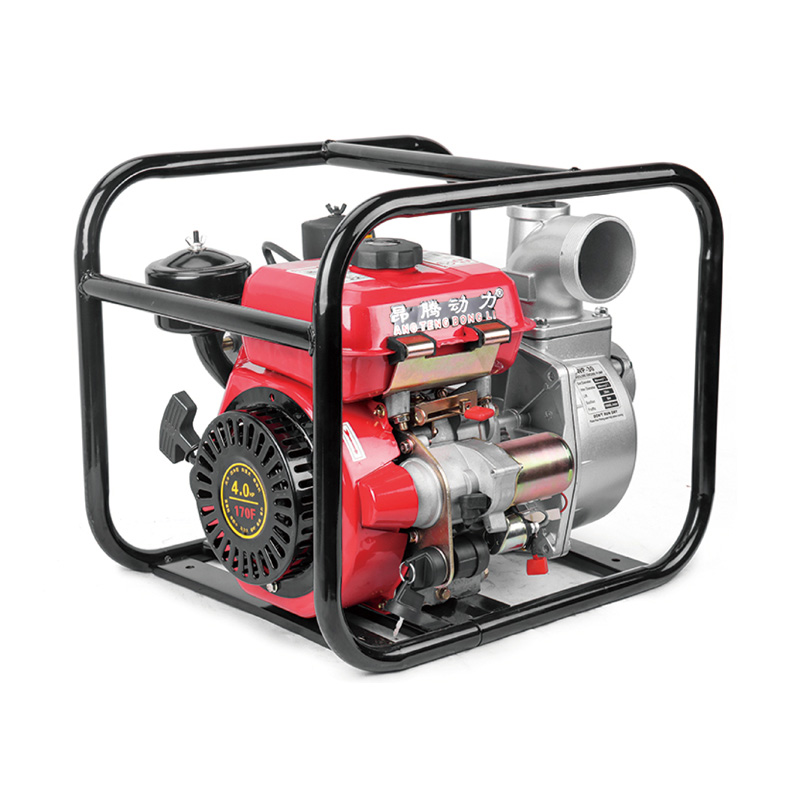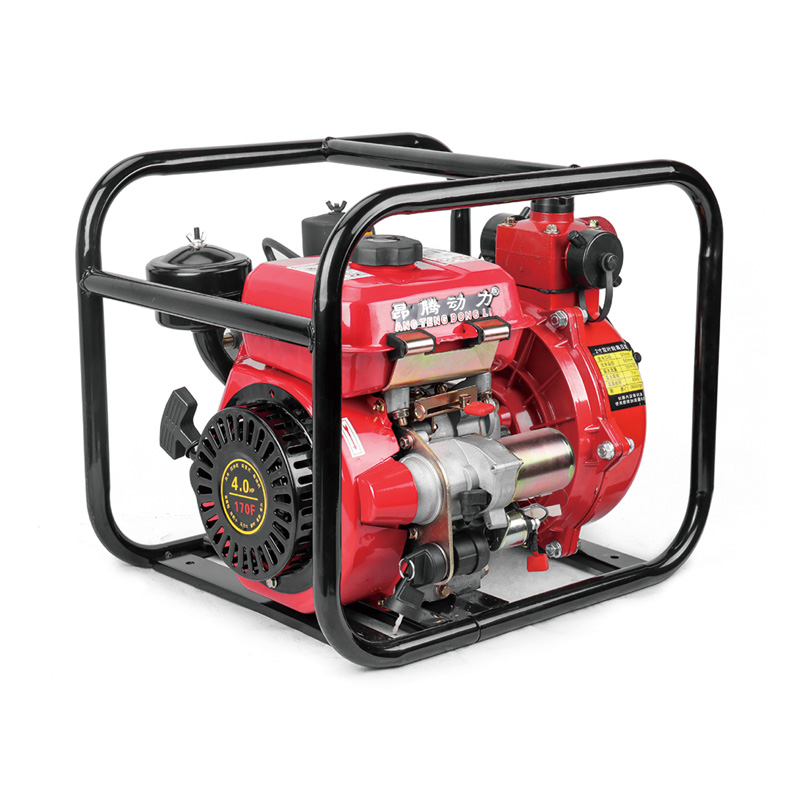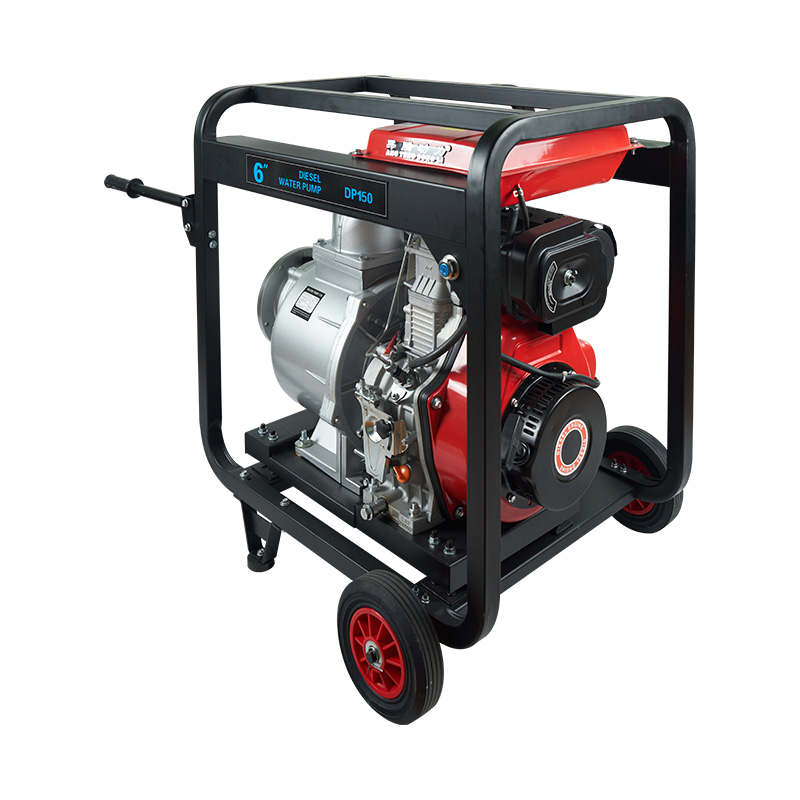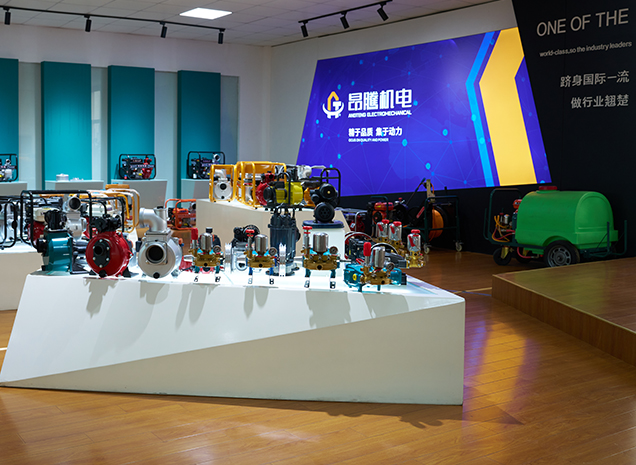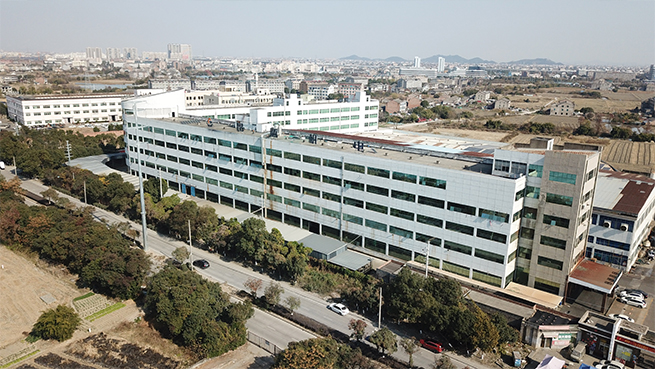What Are the Design Considerations for a Diesel Water Pump?
The diesel engine is the heart of the pump, and its power rating directly affects water delivery capacity. Engineers must match the engine’s horsepower with the pump’s flow and pressure requirements to ensure steady and efficient operation under varying workloads.
The pump housing, impeller, and shaft must be made from corrosion-resistant materials such as cast iron, stainless steel, or bronze. Since water may contain debris or chemicals, material selection plays a key role in longevity and maintenance intervals.
Diesel engines generate significant heat. A well-designed cooling system—air-cooled or water-cooled—prevents overheating. Fuel efficiency is equally important, particularly for remote operations where refueling may be infrequent.
Depending on the application, pumps can be designed as portable units with wheeled frames or fixed installations mounted on bases. Stability and ease of transport are crucial design elements for field operations.
The design should allow easy access to filters, oil drains, and fittings for regular servicing. Safety features such as automatic shutdown on low oil pressure protect the engine from damage.
Together, these considerations ensure a diesel water pump delivers dependable performance, long service life, and efficient operation in demanding environments.
High-Pressure Diesel Water Pump: Is It User-Friendly?
1. Easy Start and Operation
Modern diesel water pumps often include electric starters, reducing manual effort and making operation quicker. Intuitive control panels with pressure gauges and throttle controls allow users to monitor performance easily.
2. Mobility and Handling
Many high-pressure models are mounted on sturdy steel frames with wheels, improving portability in fields or construction sites. Compact layouts and balanced weight distribution help operators move them safely without excessive force.
3. Maintenance Accessibility
User-friendly designs provide quick access panels to filters, oil caps, and fuel tanks. This simplifies routine servicing, ensuring the pump continues to operate at peak performance without requiring advanced technical knowledge.
4. Noise and Vibration Reduction
Advanced models feature rubber shock absorbers and noise-dampening materials, improving comfort during prolonged use. Lower vibration levels also help extend the lifespan of components and reduce fatigue for operators.
5. Safety Features
Built-in safety systems, including automatic low-oil shutoff, pressure relief valves, and fuel cut-off switches, make these pumps safer to handle. Clear labeling and user manuals further support smooth operation.
When does a Diesel Engine Water Pump require maintenance?
Maintenance and Failure Prevention
Water pumps are known for their unpredictable lifespan; some may fail after 50,000 miles, while others last for a million . This unpredictability underscores the importance of regular inspection and preventative maintenance .
Common warning signs of a failing water pump include:
- Coolant leaks: Visible puddles or drips beneath the engine, especially around the pump housing .
- Salt crust formation: In marine engines, white, crusty deposits around seals or gaskets indicate seawater leakage .
- Steam in exhaust: Excessive white smoke or steam can signify coolant entering the combustion chambers .
- High temperature alarms: Activation of engine temperature warning systems .
- Noisy bearings: Grinding, whining, or squealing sounds from the pump area .
- Wobbling pulley: A visible wobble of the pump pulley during operation indicates shaft or bearing failure .
- Fluid from the weep hole: This is an early warning system; any fluid escaping from the weep hole means the seal is failing and requires immediate attention .
Preventative maintenance is crucial to avoid costly repairs and engine damage. For marine applications, specialists recommend inspecting and/or replacing impellers annually or every 1,000 hours of operation . For general diesel engines, while there isn't always a set maintenance interval, replacing the water pump during other major maintenance, especially if the engine has accumulated significant mileage, can prevent unplanned breakdowns . The cost of preventative replacement is often negligible compared to towing fees, lost wages, or catastrophic engine damage .
Repair and Replacement Considerations
When a diesel water pump fails, proper diagnosis is essential to avoid unnecessary part replacements . Common causes of cooling problems include air locks, worn impellers, loose couplings, or clogged intakes .
Key steps in water pump repair or replacement include:
Diagnosis: Verifying actual overheating, checking the thermostat, pressure cap, and using tools like infrared thermometers or borescopes to identify blockages or leaks .
Addressing root causes: This could involve purging air from the system, replacing damaged impellers (recommended annually for raw water pumps or every 1,000 hours), addressing shaft seal failures, or fixing drive-belt issues .
Rebuilding vs. Replacing: Rebuild kits typically include essential components like shaft seals, gaskets, and impellers . When choosing between OEM (Original Equipment Manufacturer) and aftermarket parts, OEM parts generally offer better quality, exact fitment, and warranty support, which is often worth the premium for critical systems like cooling, especially in harsh marine environments .
Installation: Proper preparation, draining the cooling system, careful removal and reassembly of components, and following manufacturer torque specifications are vital . Thoroughly refilling and purging air from the cooling system after installation is critical to prevent overheating .
Ignoring a leaking water pump can severe consequences, including engine overheating, warped cylinder heads, cracked blocks, and even coolant contamination of engine oil, which destroys lubrication . Therefore, addressing even minor symptoms promptly is critical for engine health and operational safety .



 English
English русский
русский Français
Français Español
Español عربى
عربى